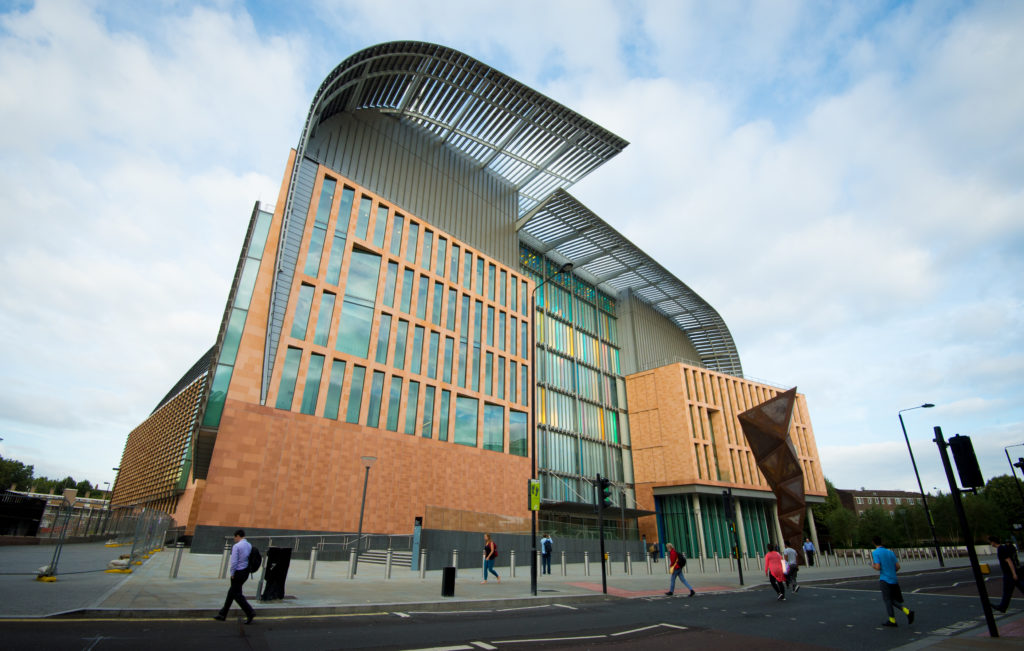The Francis Crick Institute is a distinctive biomedical research institute. Our ambition is to discover the biology underlying human health, improving the treatment, diagnosis and prevention of human disease and generating economic opportunities for the UK. Our work is helping to understand why disease develops and to translate discoveries into new ways to manage illnesses such as cancer, heart disease, infections and neurodegenerative diseases. We bring together outstanding scientists from all biomedical disciplines to carry out research that will improve the health and quality of people’s lives and keep the UK at the forefront of medical innovation.
History
The Francis Crick Institute is a unique partnership between six of the world’s leading biomedical research organisations – the Medical Research Council, Cancer Research UK, the Wellcome Trust, UCL (University College London), Imperial College London and King’s College London.
Formerly known as the UK Centre for Medical Research and Innovation (UKCMRI), the project was launched in 2007 in response to the Cooksey Report, an independent review of arrangements for funding health research in the UK.
In the summer of 2011, with a pioneering scientific vision in place and the foundations of a state-of-the-art building about to be laid, the project was given the title of the Francis Crick Institute, acknowledging the contributions of one of Britain’s most notable scientists, Dr Francis Crick. The MRC’s National Institute for Medical Research and CRUK’s London Research Institute (at Lincoln’s Inn Fields and Clare Hall) became part of the Francis Crick Institute in 2015 and in 2016 we opened our doors and staff moved into our brand new building in central London.

Vision and Mission
The Crick’s five strategic priorities are:
- Discovery
without boundaries
We support creative and ambitious research that addresses important scientific questions by working across disciplinary boundaries. - Create
future science leaders
Our dynamic career structure supports the development of world-class researchers. - Collaborate
creatively
We actively develop and promote new forms of partnership, both with our founders and the broader UK scientific community. - Accelerate
translation
We conduct discovery science, aimed at solving human health challenges. We aim to turn our science into improvements in the lives of people around the world, as well as economic opportunities. - Engage
and inspire the public
We’re committed to engaging, enlightening and inspiring people about our pioneering research and why it matters to our health, the economy and society.

Size and Scope
The Crick is organised into research groups without traditional faculties or divisions between disciplines. There are over 100 labs at the Crick working on a broad range of topics within biomedical science.
Every group leader has their own specialism but our research is guided by seven core questions:
- How does a living organism acquire form and function?
- How do organisms maintain health and balance throughout life and as they age?
- How can we use biological knowledge to better understand, diagnose and treat human disease?
- How does cancer start, spread and respond to therapy?
- How does the immune system know whether, when and how to react?
- How do microbes and pathogens function and interact with their hosts?
- How does the nervous system detect, store and respond to information?
The Crick’s building houses over 1500 scientists and support staff, making us the largest biomedical research institute under a single roof in Europe.

Achievements
Despite being a relatively young organization, there have already been significant scientific achievements at the Crick. As well as hundreds of scientific publications each year, the Crick has established strong links with partners around the world, including collaborative partnerships with GSK and AstraZeneca. Our translation team support Crick scientists to combine their ideas with commercial expertise and funding to develop new treatments and technologies. We also work closely with our local community, engaging over 15,000 local school children with our science each year.
The work of our scientists has been recognised nationally and internationally, with many researchers earning awards, fellowships and prizes, including recognition from the Royal Society, the L’Oréal-UNESCO Women in Science Awards and the Forbes 30 under 30 list.
